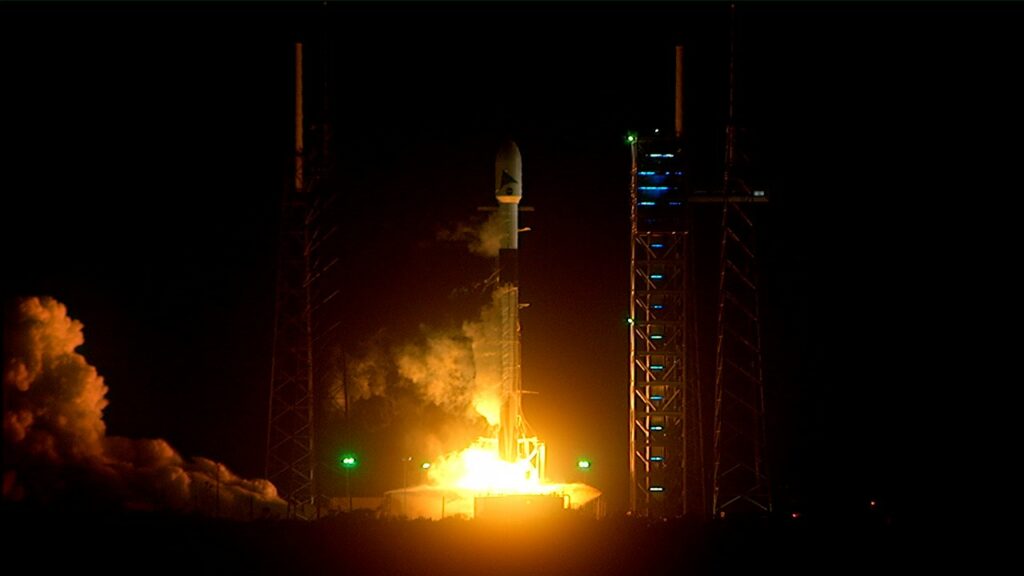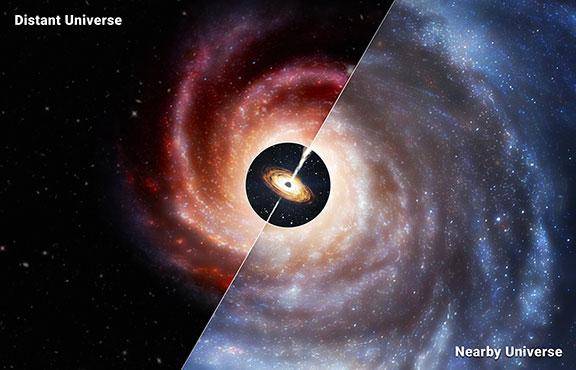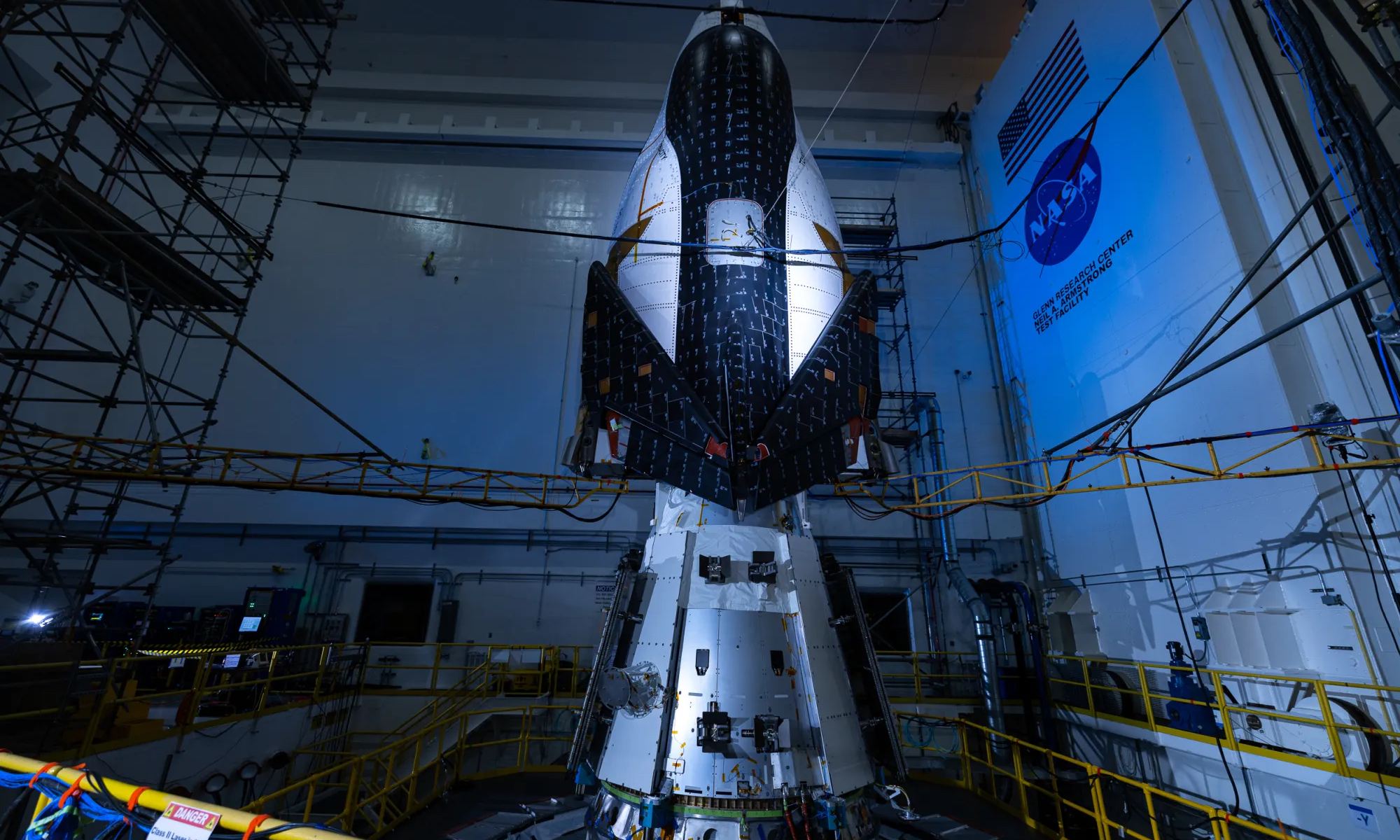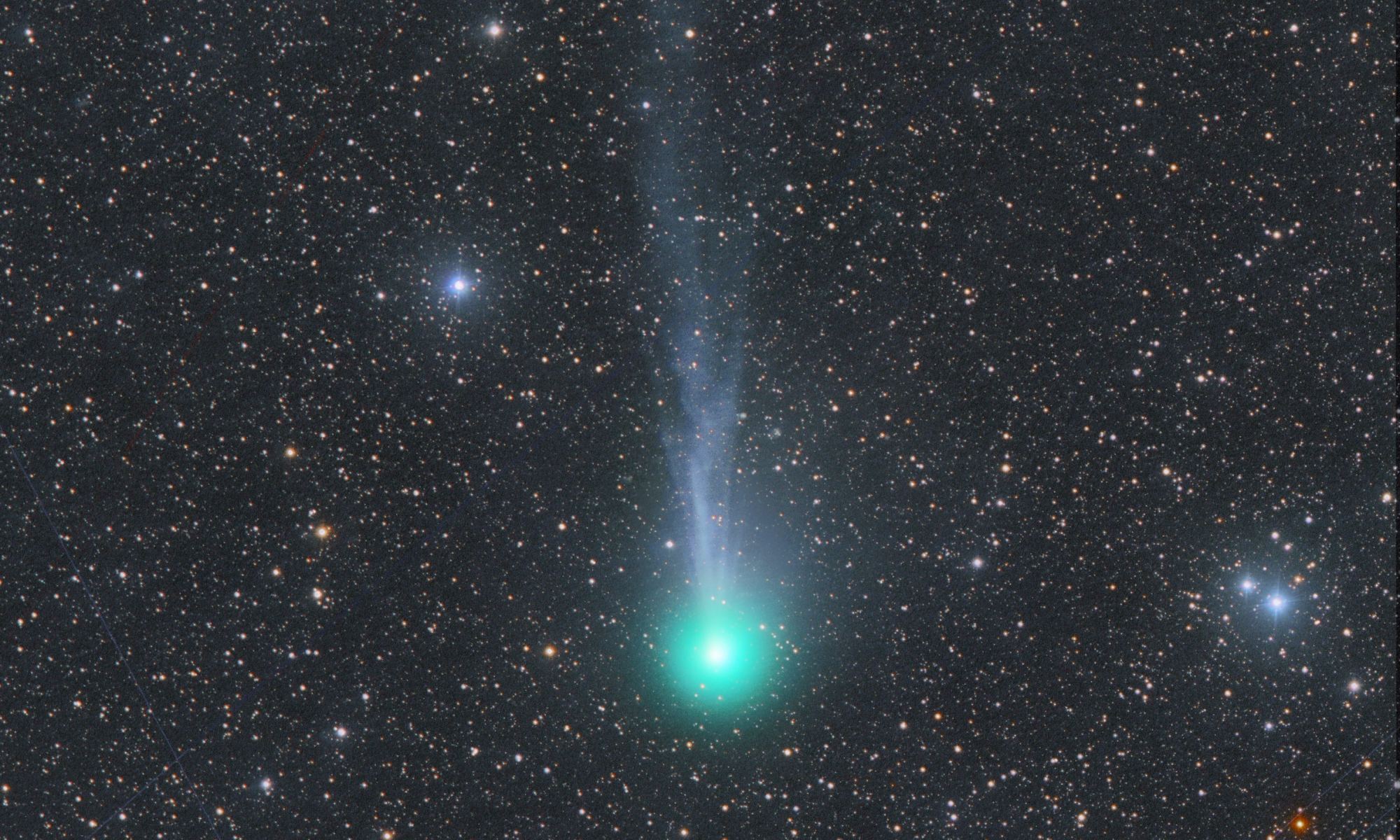NASA’s Plankton, Aerosol, Climate, ocean Ecosystem (PACE) satellite successfully launched and reached on Thursday, February 10th. The mission took off from Space Launch Complex 40 at Cape Canaveral Space Force Station in Florida, at 1:33 am EST 10:33 pm (PST) atop a SpaceX Falcon 9 rocket. About five minutes after launch, NASA confirmed that ground stations on Earth had acquired a signal from the satellite and were receiving data on its operational status and capabilities post-launch. For the next three years, the mission will monitor Earth’s ocean and atmosphere and study the effects of climate change.
Continue reading “NASA Launches a New Mission to Study the Effects of Climate Change”The Event Horizon Telescope Zooms in on a Black Hole's Jet
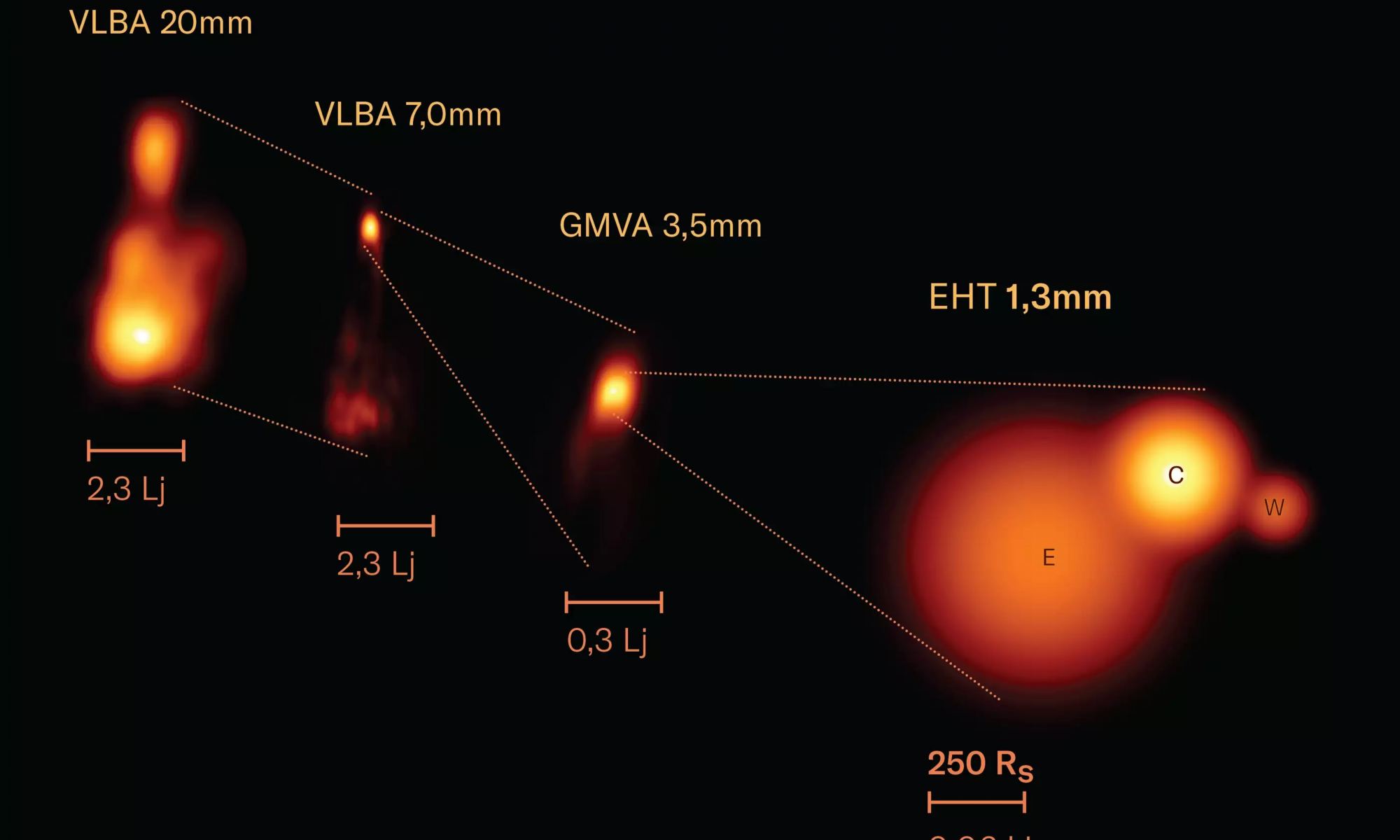
Although supermassive black holes are common throughout the Universe, we don’t have many direct images of them. The problem is that while they can have a mass of millions or billions of stars, even the nearest supermassive black holes have tiny apparent sizes. The only direct images we have are those of M87* and Sag A*, and it took a virtual telescope the size of Earth to capture them. But we are still in the early days of the Event Horizon Telescope (EHT), and improvements are being made to the virtual telescope all the time. Which means we are starting to look at more supermassive black holes.
Continue reading “The Event Horizon Telescope Zooms in on a Black Hole's Jet”Fragments From That Asteroid That Exploded Above Berlin Have Been Recovered and They're Really Special
On January 21st, 2024, a meter-sized asteroid (2024 BX1) entered Earth’s atmosphere and exploded over Berlin at 12:33 am UTC (07:45 pm EST; 04:33 pm PST). Before it reached Earth, 2024 BX1 was a Near-Earth Asteroid (NEA) with an orbit that suggests it was part of the Apollo group. The fragments have since been located by a team of scientists from the Freie Universität Berlin, the Museum für Naturkunde (MfN), the German Aerospace Center (DLR), the Technische Universität Berlin, and the SETI Institute and identified as a rare type of asteroid known as “aubrites.”
Continue reading “Fragments From That Asteroid That Exploded Above Berlin Have Been Recovered and They're Really Special”The Early Universe Had Small Galaxies with Oversized Black Holes
When doing the marketing for the James Webb Space Telescope (JWST), NASA and the other telescope contributors liked to point out how it would open up the early universe to scrutiny. They weren’t exaggerating, and now scientific studies are starting to proliferate that show why. A new study published by authors from Harvard, the University of Arizona, and the University of Cambridge used three surveys produced by the JWST to analyze the supermassive black holes at the center of early galaxies. And they found they were much different than the one at the center of our own, at least in terms of relative size.
Continue reading “The Early Universe Had Small Galaxies with Oversized Black Holes”Hubble Sees a Bridge of Stars Connecting Two Galaxies

The poetic-minded among us like to point out how Nature is a dance. If they’re right, then galaxies sometimes form unwieldy pairs. With the Hubble Space Telescope, we can spot some of these galactic pairs as they approach one another.
Continue reading “Hubble Sees a Bridge of Stars Connecting Two Galaxies”NASA’s JPL Lays Off Hundreds of Workers
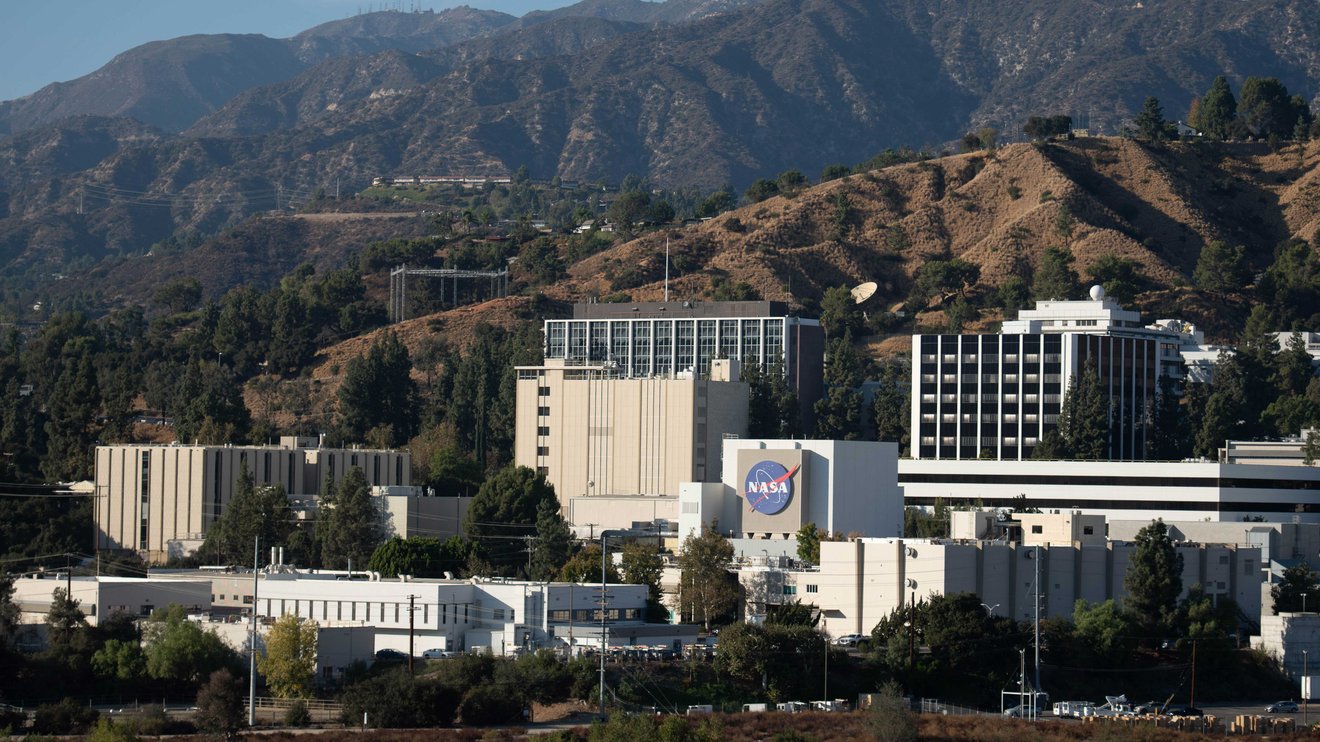
In a disheartening turn of events, NASA’s Jet Propulsion Laboratory has announced that it’s laying off about 8% of its workforce. That means that about 530 JPL employees will be let go, along with about 40 employees of the Lab’s contractors. That sucks for the people being let go, but the bigger concern for the rest of us is what will happen to upcoming missions like Mars Sample Return (MSR)?
Continue reading “NASA’s JPL Lays Off Hundreds of Workers”Did the Galileo Mission Find Life on Earth?
In the Fall of 1989, the Galileo spacecraft was launched into space, bound for Jupiter and its family of moons. Given the great distance to the king of planets, Galileo had to take a roundabout tour through the inner solar system, making a flyby of Venus in 1990 and Earth in 1990 and 1992 just to gain enough speed to reach Jupiter. During the flybys of Earth Galileo took several images of our planet, which astronomers have used to discover life on Earth.
Continue reading “Did the Galileo Mission Find Life on Earth?”NASA Gives Dreamchaser the Shakedown
It’s been a while since NASA has had a spaceplane on the launchpad but this now feels closer than ever again. Their new prototype cargo spaceplane known as Dream Chaser is now undergoing vibration and vacuum testing at the Neil Armstrong test facility. The tests sound a little strange perhaps but on launch and during re-entry it will most definitely experience shaking during these phases of the flights.
Continue reading “NASA Gives Dreamchaser the Shakedown”The Comet vs. the Eclipse: 12P/Pons-Brooks Heads Towards Perihelion in April
Comet 12P Pons-Brooks takes center stage this Spring.
Something is definitely up with the 12th periodic comet in the catalog. We’re talking about Comet 12P Pons-Brooks, set to reach the first of two perihelia for the 21st century this Spring. And the timing couldn’t be better, as the comet will also sit near the Sun just two weeks prior during the total solar eclipse of April 8th 2024, spanning the North American continent from the southwest to the northeast. If the comet over-performs—a long shot, but multiple outbursts in 2023 suggest it just might—we could be in for the added treat of a naked eye comet near the Sun during totality.
Continue reading “The Comet vs. the Eclipse: 12P/Pons-Brooks Heads Towards Perihelion in April”Gravitationally Lensed Supernovae are Another Way to Measure the Expansion of the Universe
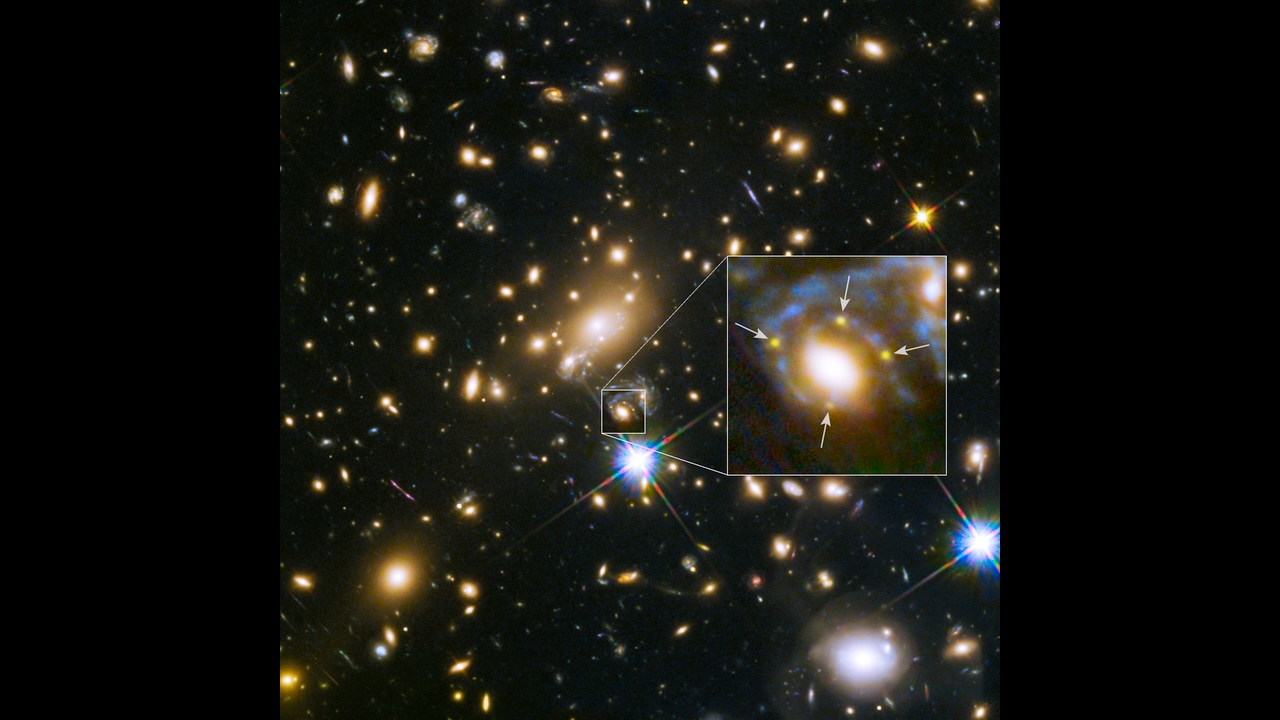
Supernova are a fascinating phenomenon and have taught us much about the evolution of stars. The upcoming Nancy Grace Roman telescope will be hunting the elusive combination of supernovae in a gravitational lens system. With its observing field 200 times that of Hubble it stands a much greater chance of success. If sufficient lensed supernovae are found then they could be used to determine the expansion rate of the Universe.
Continue reading “Gravitationally Lensed Supernovae are Another Way to Measure the Expansion of the Universe”
